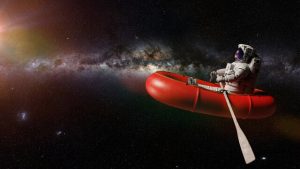Klaus Hasselmann Wins Physics Nobel Prize for Contributions to Earth Observation
23rd Oct 2021
Klaus Hasselmann is a German climate modeler and oceanographer, best known for the development of the Hasselmann model of climate variability; his research has allowed scientists to use satellites in an Earth Observation mission to quantify the climate’s natural variability and build models to better predict climate change using satellites.
Professor Hasselmann helped the European Space Agency create ERS-1 and ESR-2
Hasselmann, now 89, has worked with the European Space Agency for many years. His research helped create the Earth observation program that used satellites for the global study of environmental changes. Hasselmann also contributed to the development of the ERS-1 and the ERS-2, the European Remote Sensing satellites.
The ERS-1 was launched on 17th July 1991, and was considered Europe’s most sophisticated spacecraft for its time. The satellite carried an imaging synthetic aperture radar that monitored wave behavior as well as a radar altimeter, a sensor that measured altitude. The satellite was also equipped with a wind scatterometer that measured Earth’s atmosphere’s impact on radar signals.
The ERS satellites helped bring an understanding of global changes to new light as well as popularise the use of satellites for climate Earth observation.
ESA Director General Josef Aschbacher issued a statement following the award ceremony: “We send our most sincere congratulations to Prof. Dr. Hasselmann for his well-deserved Nobel Prize.”
Syukuro and Parisi’s shared Nobel Prize
Syukuro Manabe was the first researcher to demonstrate the effects that carbon dioxide has on Earth’s atmosphere and how the increase in CO2 emissions leads to an increase in temperatures. Giorgio Parisi is a theoretical physicist who worked to broaden the understanding of disordered materials and random processes, such as planetary-level developments and atom-scale.
The 2021 Nobel Prize for Physics is shared among the three winners, as their joint contributions have helped Earth observation satellites become the most environmentally conscious way of analyzing and observing environmental changes from space.






Thank you for your comment! It will be visible on the site after moderation.